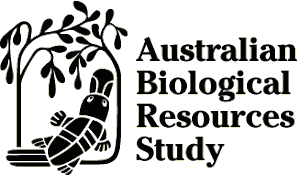Australian Tropical Rainforest Plants - Online edition
Corynocarpus cribbianus (F.M.Bailey) L.S.Sm.
Click/tap on images to enlarge
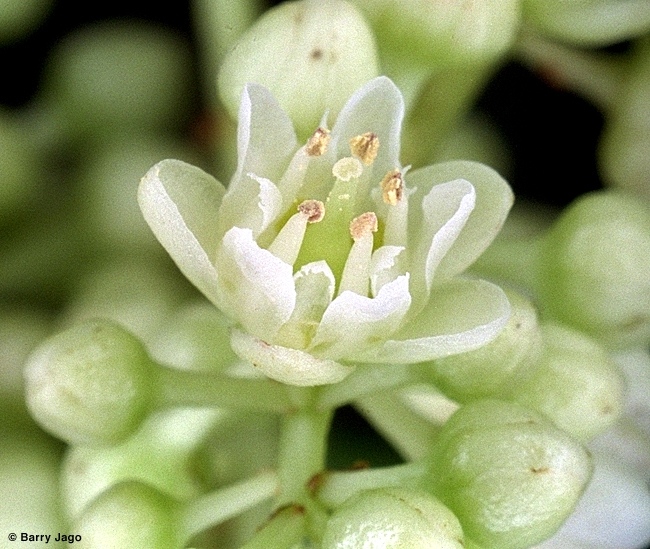
Flower. © Barry Jago
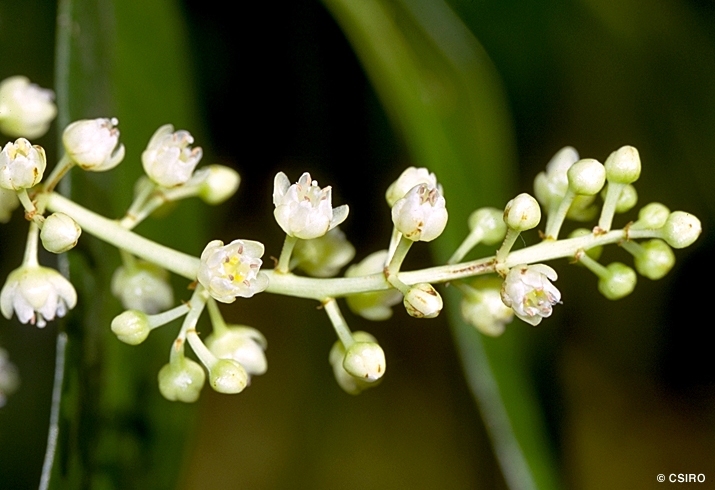
Flowers. © CSIRO
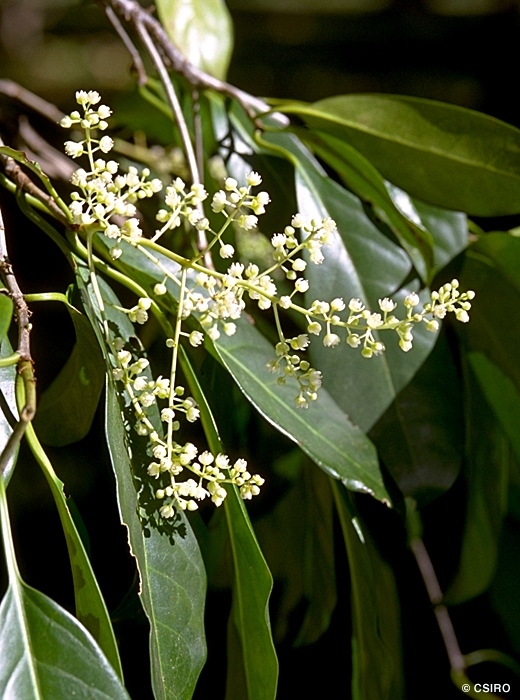
Leaves and Flowers. © CSIRO
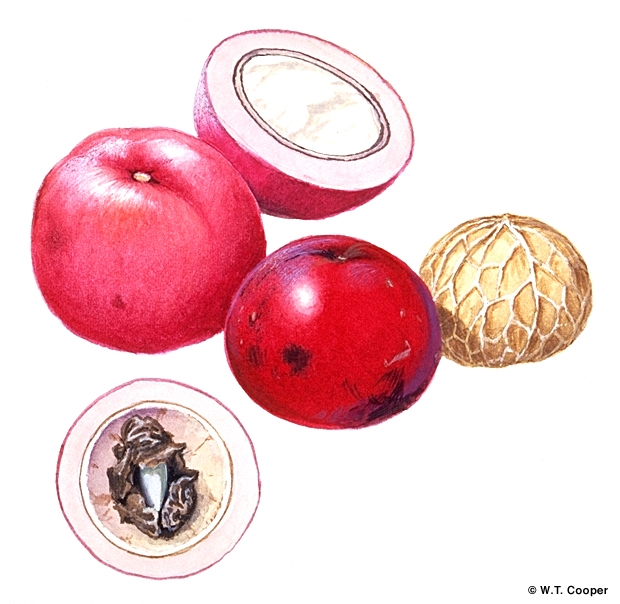
Fruit, two views, cross section and seed. © W. T. Cooper
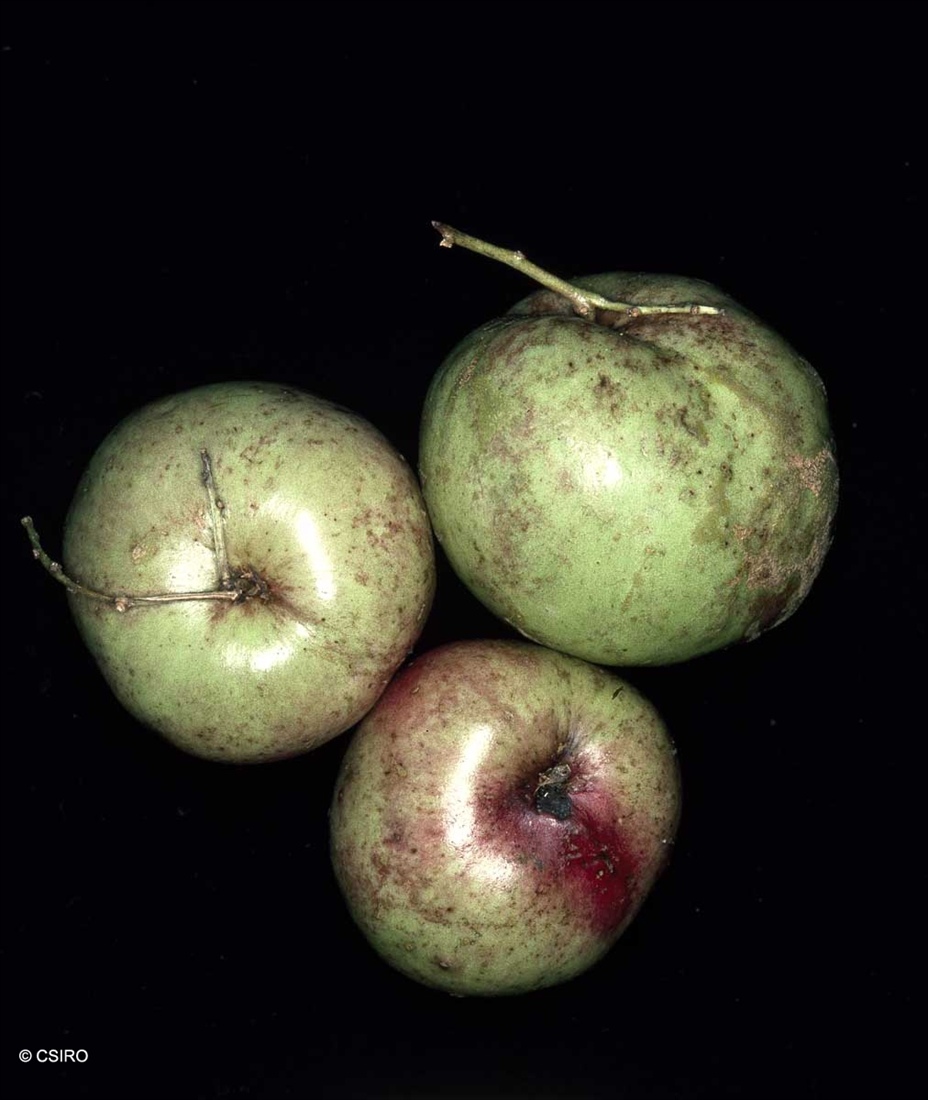
Fruit. © CSIRO

Leaves and fruit. © CSIRO

Scale bar 10mm. © CSIRO
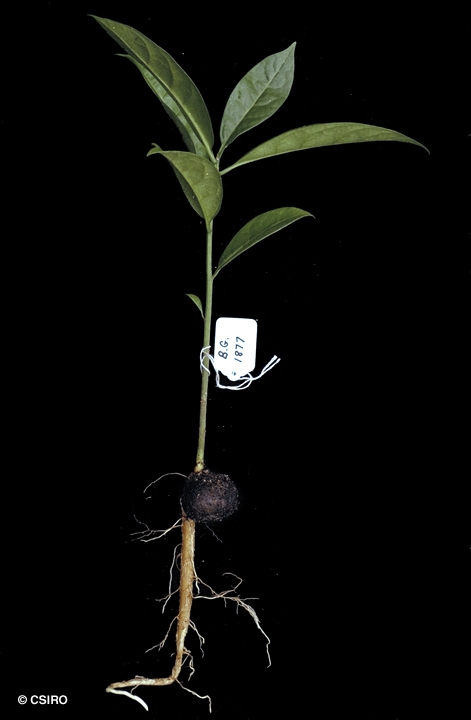
Cotyledon and 1st leaf stage, hypogeal germination. © CSIRO

Cotyledon stage, hypogeal germination. © CSIRO
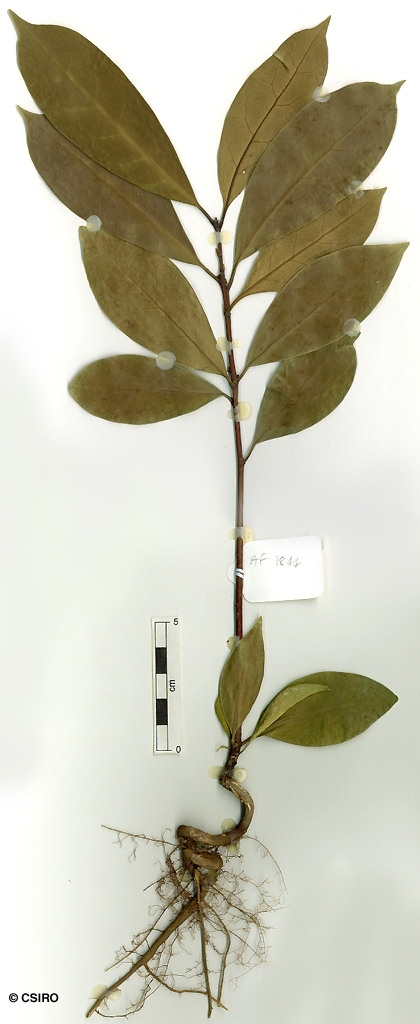
10th leaf stage. © CSIRO
Family
Smith, L.S. (1956) Proceedings of the Royal Society of Queensland 67: 31.
Common name
Cribwood
Stem
Oak grain in the wood, plus tangential lines result in a spiderweb appearance on stem cross sections. Pattern in the inner blaze matches oak grain in the wood. Cambial layer turning pink on exposure.
Leaves
Flowers
Seedlings
At the tenth leaf stage: stipules triangular, papery, large and conspicuous, about 4 mm long, caducous, produced between the base of the petiole and the stem. Leaf blade obovate, apex acuminate, base cuneate, margin usually entire sometimes with one small tooth towards the apex. Seed germination time 76 to 347 days.
Distribution and Ecology
Natural History & Notes
Fallen fruit eaten by Cassowaries. Cooper & Cooper (1994).
Synonyms
Helicia cribbiana (F.M.Bailey) F.M.Bailey, Queensland Flora 4: 1327(1901). Cyanocarpus cribbiana F.M.Bailey, Queensland Agricultural Journal 1(5): 370(1897), Type: Mourilyan district, E. Cowley, Sept., 1897. Corynocarpus australasicus C.T.White, Contributions from the Arnold Arboretum of Harvard University 4: 57(1933), Type: Gadgarra, Atherton Tableland, alt. 800 m., common in rain-forest, .. no. 1024 (type; flowers and fruits), Aug. 22.
RFK Code
76
Copyright © CSIRO 2020, all rights reserved.

Web edition hosted at https://apps.lucidcentral.org/rainforest



